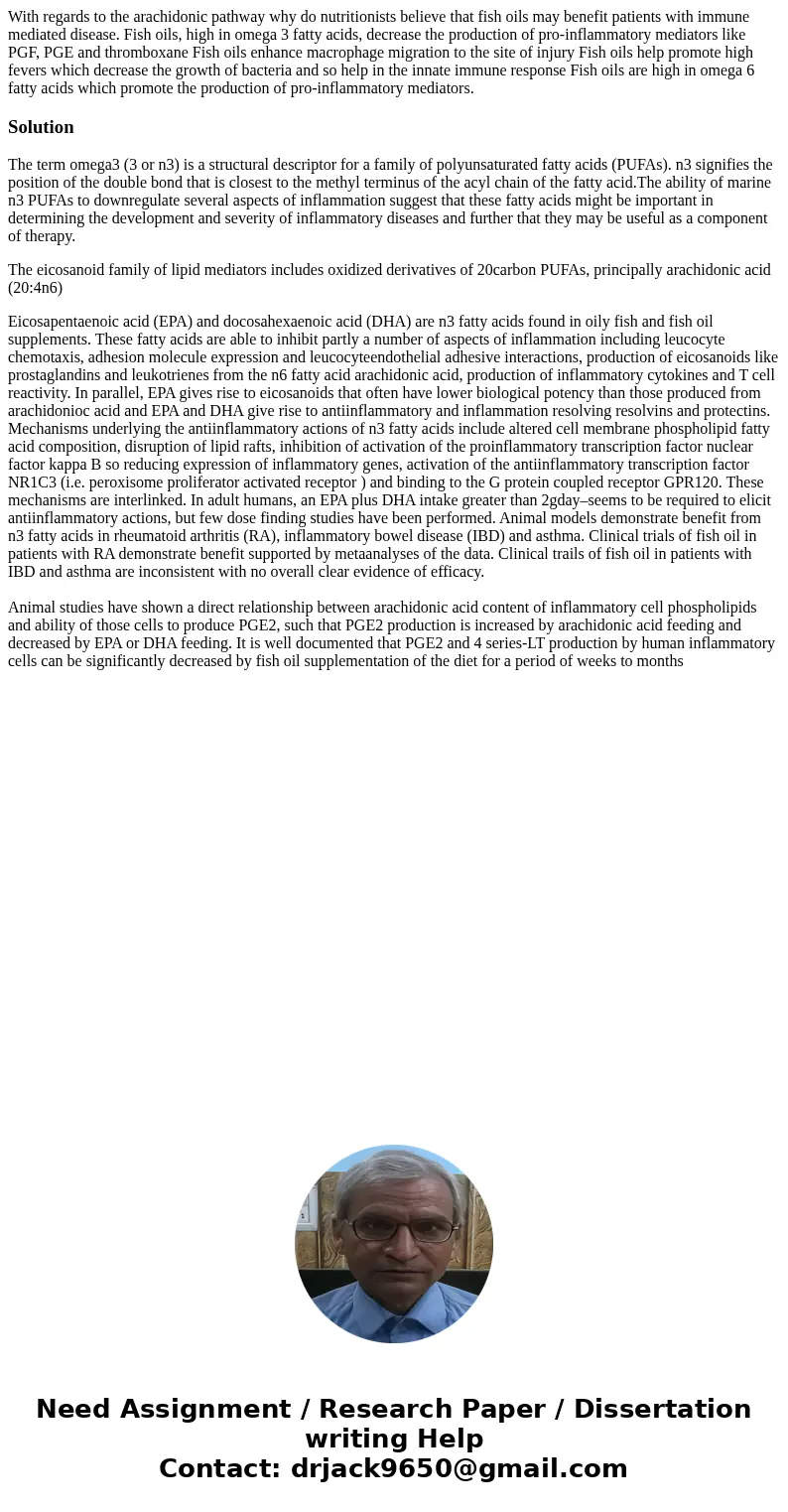With regards to the arachidonic pathway why do nutritionists
Solution
The term omega3 (3 or n3) is a structural descriptor for a family of polyunsaturated fatty acids (PUFAs). n3 signifies the position of the double bond that is closest to the methyl terminus of the acyl chain of the fatty acid.The ability of marine n3 PUFAs to downregulate several aspects of inflammation suggest that these fatty acids might be important in determining the development and severity of inflammatory diseases and further that they may be useful as a component of therapy.
The eicosanoid family of lipid mediators includes oxidized derivatives of 20carbon PUFAs, principally arachidonic acid (20:4n6)
Eicosapentaenoic acid (EPA) and docosahexaenoic acid (DHA) are n3 fatty acids found in oily fish and fish oil supplements. These fatty acids are able to inhibit partly a number of aspects of inflammation including leucocyte chemotaxis, adhesion molecule expression and leucocyteendothelial adhesive interactions, production of eicosanoids like prostaglandins and leukotrienes from the n6 fatty acid arachidonic acid, production of inflammatory cytokines and T cell reactivity. In parallel, EPA gives rise to eicosanoids that often have lower biological potency than those produced from arachidonioc acid and EPA and DHA give rise to antiinflammatory and inflammation resolving resolvins and protectins. Mechanisms underlying the antiinflammatory actions of n3 fatty acids include altered cell membrane phospholipid fatty acid composition, disruption of lipid rafts, inhibition of activation of the proinflammatory transcription factor nuclear factor kappa B so reducing expression of inflammatory genes, activation of the antiinflammatory transcription factor NR1C3 (i.e. peroxisome proliferator activated receptor ) and binding to the G protein coupled receptor GPR120. These mechanisms are interlinked. In adult humans, an EPA plus DHA intake greater than 2gday–seems to be required to elicit antiinflammatory actions, but few dose finding studies have been performed. Animal models demonstrate benefit from n3 fatty acids in rheumatoid arthritis (RA), inflammatory bowel disease (IBD) and asthma. Clinical trials of fish oil in patients with RA demonstrate benefit supported by metaanalyses of the data. Clinical trails of fish oil in patients with IBD and asthma are inconsistent with no overall clear evidence of efficacy.
Animal studies have shown a direct relationship between arachidonic acid content of inflammatory cell phospholipids and ability of those cells to produce PGE2, such that PGE2 production is increased by arachidonic acid feeding and decreased by EPA or DHA feeding. It is well documented that PGE2 and 4 series-LT production by human inflammatory cells can be significantly decreased by fish oil supplementation of the diet for a period of weeks to months

 Homework Sourse
Homework Sourse